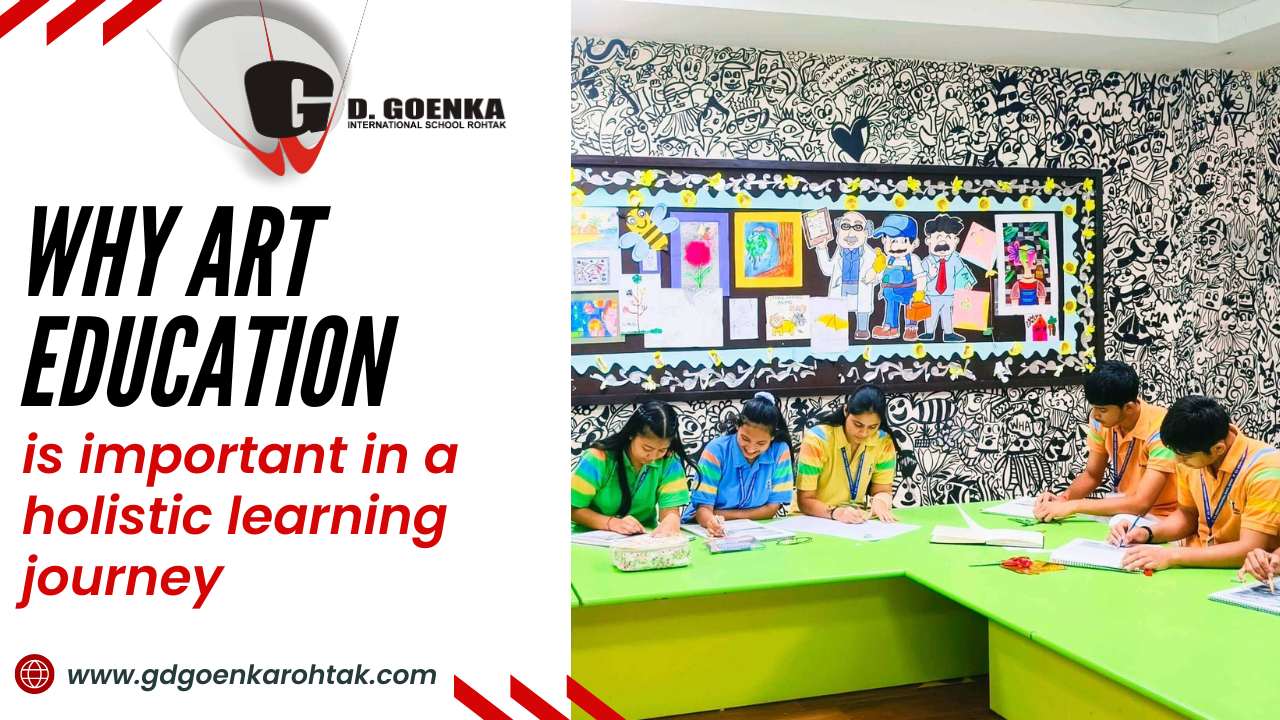Children are naturally curious and eager to understand how things work. They explore, observe, and imitate in order to gain knowledge and control over their surroundings. This unrestricted exploration allows them to learn, form connections in their brain, and have fun.
Art is important for children as it promotes free play, creativity, and learning. It allows them to experiment and explore different materials in a fun and educational way. It helps develop a range of skills that are valuable for life and learning.
Art education in schools, like GD Goenka Boarding School, Rohtak helps children develop holistic skills and competencies. It is beneficial for their overall growth and enables them to become well-rounded professionals. Art education encompasses various forms of knowledge in music, dance, and visual arts. It promotes creativity, innovation, and encourages group learning and teamwork from a young age. Imparting art education in childhood has numerous benefits.
The blog discusses the importance of art education in Best Boarding schools in North India and its role in shaping well-rounded professionals.
1) Boosts Creative Thinking
Art education, including dance forms and music, allows children to express themselves creatively. Through painting, they can bring their mental images to life on paper. Learning music enables them to create various rhythms, enhancing creativity and problem-solving skills. Similarly, dancing strengthens neural connections as it is driven by impulses. Choreographing for a song requires tuning body movements to match the music, providing an opportunity for creative expression. The Top Boarding Schools in Haryana encourages children to express their creativity through dance, yoga, music, and other art activities.
2) Serves as a medium of relaxation
Children should learn dance, music, and other art forms because they provide a natural way to relax. This is important because academics can be stressful for children, and stress and anxiety continue into adulthood. Art forms like yoga, music, and dance offer holistic rejuvenation similar to going on vacation or doing something they love.
3) Decision Making Skills
Investing time and effort in learning art forms helps students enhance their decision-making skills. When engaged in activities like painting, dancing, or music, they need to make choices like selecting colors, dance moves, or rhythms. This practice allows them to become more confident in their decisions and push themselves out of their comfort zones.
4) Improves Fine Motor Skills
Encouraging children to practice art forms like yoga, dance, and music from a young age can help enhance their fine motor skills. For example, when learning music, they need to use their hands and fingers to produce the intended sounds. Similarly, painting and drawing require movement in the wrists, fingers, and sometimes the whole hand. Even simple activities like scribbling with crayons can improve fine motor skills. Dance also requires coordination among small muscles and sensory organs, helping improve fine motor skills.
5) Enhances Social Skills
Engaging in art forms like dance, drawing, or yoga allows children to develop social skills through teamwork and communication. This helps them later in life when they need to work in teams and manage conflicts professionally.
The Boarding Schools in India prioritizes teamwork, communication, and social skills. Students are encouraged to work in teams and participate in activities like painting, drawing, and dancing. This helps enhance their social skills and allows them to experience different cultures while building relationships with their peers.
6) Development of Fine and Gross Motor Skills
Art activities help children develop fine motor skills through actions like using small brushes, pencils, or scissors. This improves hand movements and hand-eye coordination. Coloring within the lines and cutting out shapes require controlled hand movements and concentration. Additionally, activities like dance, theater, and large-scale painting projects promote gross motor skills by enhancing body awareness, balance, and coordination.
7) Enhances memory and cognitive development
Engaging in creative activities like drawing, crafting, or painting helps children think creatively and develop problem-solving skills. Art allows them to explore new ideas and make choices based on their preferences and imagination since there is no one right answer to artistic challenges. Exposing children to music helps improve their knowledge of words and sentences by making it easier for them to remember. This improves their memory and offers opportunities for hands-on learning.


